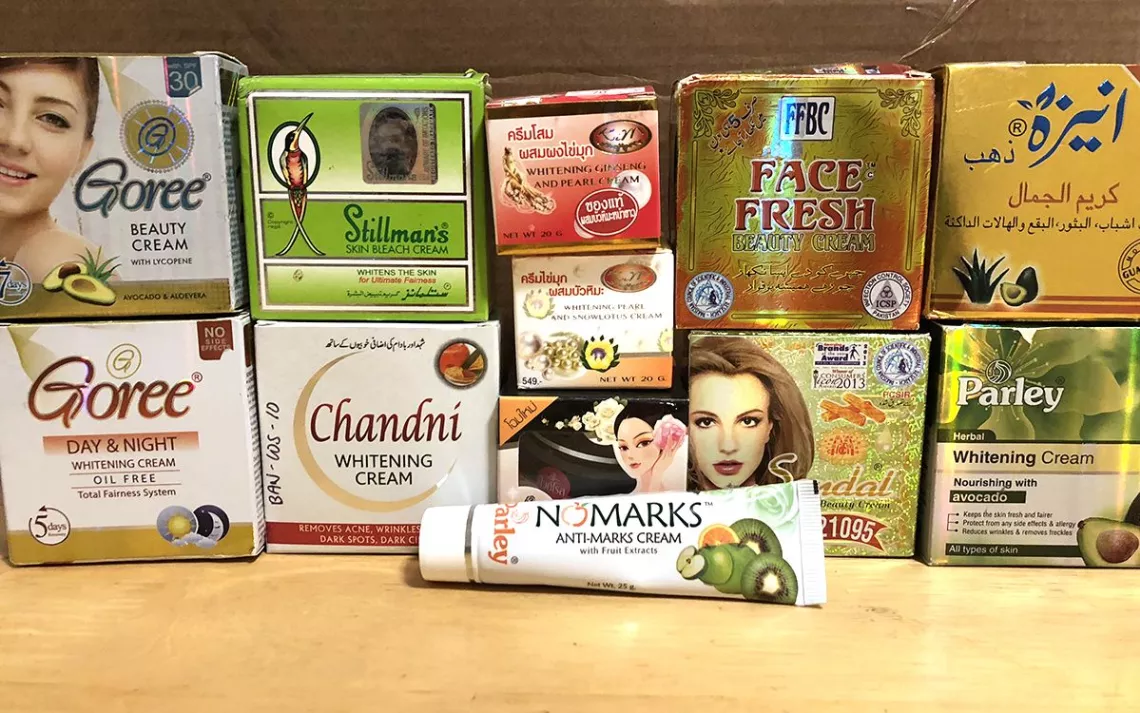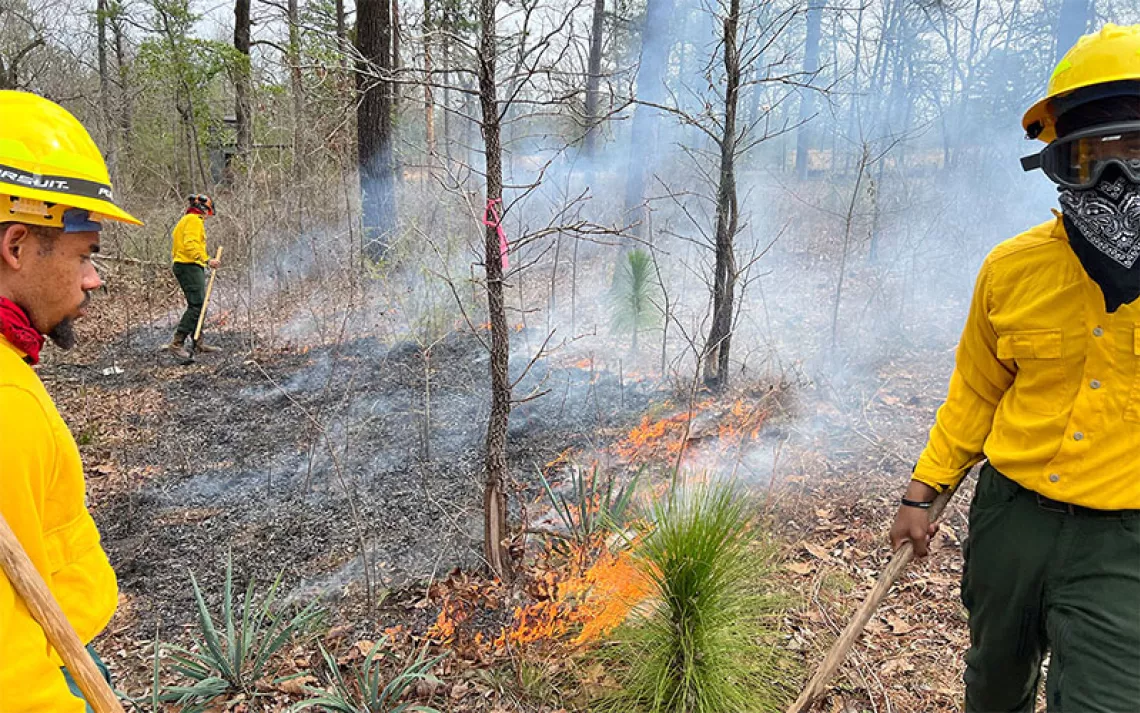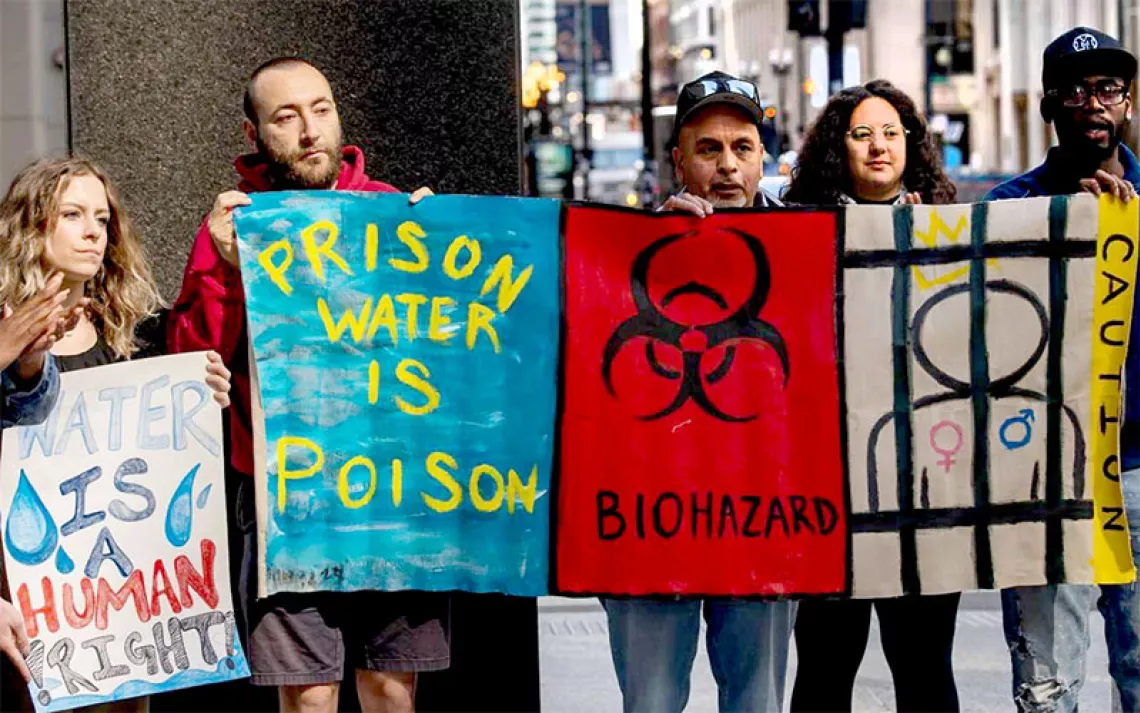The Rise of Toxic Skin Lightening Creams
Community advocates call for a ban on mercury-based cosmetics

Photo by Michael Bender
In community centers in Minnesota’s metro areas, young Somali girls are breaking an unspoken taboo to talk about a subject that, for them, could quite literally be poisonous: beauty.
Somali men want light-skinned women to be their wives, the girls say. Their community encourages this attitude. The girls recall conversations with mothers and aunts, who speak to Somali girls they deem beautiful, saying, Caadey, "you are so lovely."
“We have this term of endearment in the Somali community: It means ‘Whitey.’ It’s so embedded in the culture, people don’t even realize what they’re saying,” says Amira Adawe, founder of the Beauty Well Project, a Minnesota-based organization combating toxic skin lightening practices in immigrant communities. Cosmetic skin lighteners often contain mercury, a highly toxic heavy metal, putting women at risk of permanent scarring, nerve damage, kidney malfunction, and fetal developmental problems. Adawe, a researcher and public health educator working in Governor Mark Dayton’s Children’s Cabinet, holds workshops within the Somali immigrant community to raise awareness of mercury in skin lighteners and advocates within the government to keep the products off store shelves.
“It’s a stigma,” Adawe says. “People don’t want to be talked about for using it, but they’re also told that light skin is beautiful and dark skin is not. Women won’t tell their doctors that they’re using skin lighteners, so I teach health providers culturally sensitive ways to ask a patient who’s experiencing mercury exposure if she’s using skin lighteners.”
Demand for skin lighteners is high: The global industry exceeds $10 billion and is projected to grow to $23 billion by 2030. Primarily marketed to women—though they are gaining a following among men—the biggest market for skin lightening creams is in the Asia-Pacific, in countries like Thailand and Indonesia; they are also widely used in Africa, Latin America, and the Middle East.
Despite being banned by the Food and Drug Administration in 1973, mercury-based skin lighteners are easy to access. Retailers often omit mercury in product ingredient lists. In a study by Sierra Club toxicologists of skin lightening products found on Amazon and eBay, 19 creams were identified to have mercury levels up to 30,000 times greater than the legal limit of 1 part per million. None of the products listed mercury among their ingredients. “The internet model is no accountability,” says Sonya Lunder, a toxicologist who participated in the study. Online retailers do a lot of lip service to environmental groups, Lunder says, without serious commitment. For example, in October, Amazon announced a chemicals management policy that includes its first-ever restricted substance list—but it only regulates products under Amazon’s private brands. Most skin lighteners are sold by third-party vendors. Such pledges are “a trend in the industry,” Lunder observes. “Retailers will say they won’t sell products that contain mercury, but will do little to implement it. They need to actually be meaningful in their commitment to consumer protection.”
With sales in mercury-based skin lighteners ever increasing, governments and environmental groups are responding. In November, 51 environmental, health, and justice organizations, including the Sierra Club, from over 20 countries called on Amazon and eBay to ban the sale of mercury-based skin lighteners. In simultaneous letters, the groups demanded that the companies “ensure the products they sell comply with government regulations; develop and monitor lists of toxic skin lighteners; and require prior sale approval for those to be sold.” The groups’ call to action aligned with restrictions set forth by the global Minamata Convention in 2013, which is set to ban the sale of mercury-based cosmetics after 2020.
To deduce who is affected the worst by this public health crisis, says Adawe, look no further than cultures that have been historically victimized by colonial beauty standards.
“When I first started researching about skin lighteners and who uses them, I thought it was just the older Somali generation,” she says. “But it’s also the Hmong population in Minnesota. The Latinos. Young girls of East African descent. They start at a very young age, because they experience a lot of identity crises. They don’t fit in in their own culture or American culture, not perfectly: At home, people will comment if they’re dark skinned; when they go to school, they still don’t fit in with American kids for the same reason. Young girls internalize all of this. The reason most people do this is heavily associated with fear.”
Colorism, at its heart, is fear. Fear of being undesirable if you’re dark-skinned; fear of being judged based on Jim Crow–era stereotypes that belittle people’s intelligence based on skin color, or stoke fears of natural-born violence. And in tight-knit communities, colorism elicits the fear of being shunned not just by strangers, but by those you love, because of something about yourself that you cannot change—not without paying a heavy price.
Adawe has spent the last seven years trying to disrupt internalized racism that demands dark-skinned women poison themselves with heavy metal to be accepted by society. Through the Beauty Well Project, Adawe has implemented a multipronged approach, training community health workers and dermatologists, conducting studies of mercury exposure in immigrant communities, hosting a local call-in radio show, raiding beauty stores for illegal products, and holding workshops for both men and women to learn about mercury poisoning, and talk openly about cultural stigmas.
“This is as big a public health crisis as lead, and needs to be treated as such in city and county budgets,” Adawe says. “Multiple communities lose if governments do not allocate resources to educating their communities about this, and ban these products. Education is key because the more people that know and hear about this, the more the narrative of who gets to be beautiful changes. It’s a trickle-down effect: How do we change that narrative and redefine what beauty means, so that it’s not always about one specific feature?”
 The Magazine of The Sierra Club
The Magazine of The Sierra Club



